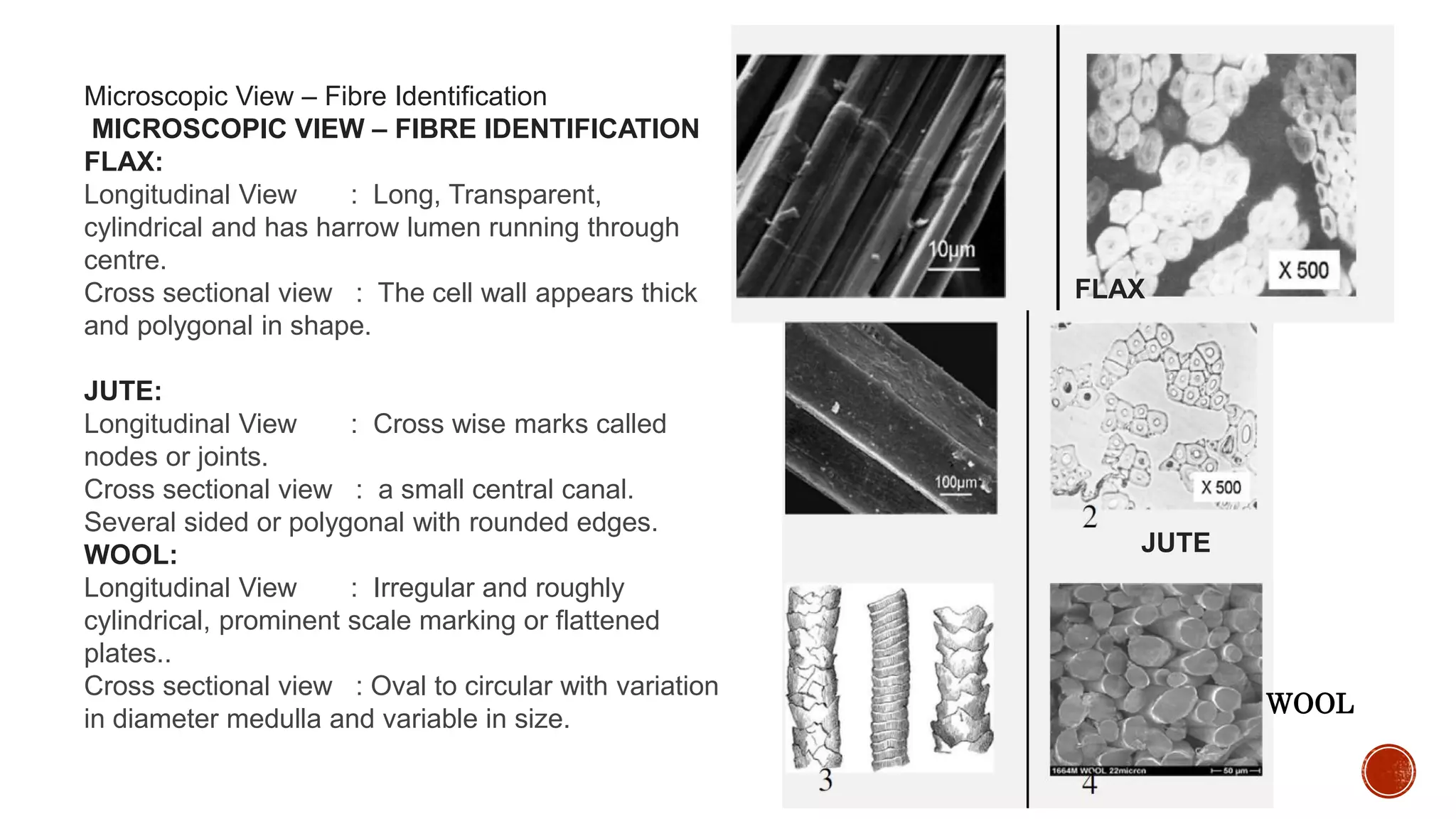The document provides a detailed overview of various types of fibers, including their chemical compositions, characteristics, and methods for forensic analysis. It discusses fiber classifications, identification techniques such as microscopy, spectroscopy, and chromatography, and provides guidelines for fiber recovery in forensic contexts. The document emphasizes the importance of different analytical methods in identifying synthetic and natural fibers, as well as their dye compositions.






















![ TLC is a common tool used for the
comparison of fiber dyes in many
forensic laboratories, but only limited
chemical identification is possible with it.
TLC can be used with other techniques
such as microscopy and UV–vis
microspectrophotometry in the
comparison of fiber batches.
TLC can separate more dye classes
than other technique can do.
TLC requires relatively large quantities
of dye and different solvent systems for
different dye classes.
High-performance liquid chromatography (HPLC) is
another technique that is more advantageous than TLC
and UV–vis mass spectrophotometry in the analysis of
dyed fibers.
HPLC gives better resolution and sensitivity.
Furthermore, it can be used for the quantification of
dye classes.[78]
Different practical considerations come into play
when an HPLC system is used for fiber dye analysis
eg. organic solvents that have been used for the
extraction of dyed fiber may interfere with the UV–vis
detector.
Some of the extracted dye classes may degrade, so
low extraction temperatures are required for
extractions.
Reversed-phase HPLC separation of dyes for the
charged dye classes has been used, and anionic dyes
have been separated more successfully compared with
cationic dyes.
Even then, however, gradient elution may be required
to separate complex dye mixtures;
shorter fiber lengths of light dyes upon extraction
may also yield insufficient amounts for analysis.](https://image.slidesharecdn.com/fiberexamination-221219204011-e7fd5c45/75/Fiber-examination-pptx-23-2048.jpg)

